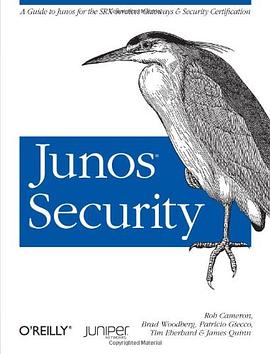1.
Chapter 1 Introduction to the SRX
1.
Evolving into the SRX
2.
The SRX Series Platform
3.
Deployment Solutions
4.
SRX Series Product Lines
5.
Branch SRX Series
6.
Data Center SRX Series
7.
Summary
8.
Chapter Review Questions
9.
Chapter Review Answers
2.
Chapter 2 What Makes Junos So Special?
1.
OS Basics
2.
Coming from Other Products
3.
Summary
4.
Chapter Review Questions
5.
Chapter Review Answers
3.
Chapter 3 Hands-On Junos
1.
Introduction
2.
Driving the Command Line
3.
Operational Mode
4.
Configuration Mode
5.
Commit Model
6.
Restarting Processes
7.
Junos Automation
8.
Junos Configuration Essentials
9.
Summary
10.
Chapter Review Questions
11.
Chapter Review Answers
4.
Chapter 4 Security Policy
1.
Security Policy Overview
2.
SRX Policy Processing
3.
Viewing SRX Policy Tables
4.
Viewing Policy Statistics
5.
Viewing Session Flows
6.
Policy Structure
7.
Policy Logging
8.
Troubleshooting Security Policy and Traffic Flows
9.
Application Layer Gateway Services
10.
Policy Schedulers
11.
Web and Proxy Authentication
12.
Case Study 4-1
13.
Case Study 4-2
14.
Converters and Scripts
15.
Summary
16.
Chapter Review Questions
17.
Chapter Review Answers
5.
Chapter 5 Network Address Translation
1.
How the SRX Processes NAT
2.
Source NAT
3.
Destination NAT
4.
Static NAT
5.
Summary
6.
Chapter Review Questions
7.
Chapter Review Answers
6.
Chapter 6 IPsec VPN
1.
VPN Architecture Overview
2.
IPsec VPN Concepts Overview
3.
Phase 1 IKE Negotiations
4.
Phase 2 IKE Negotiations
5.
Flow Processing and IPsec VPNs
6.
SRX VPN Types
7.
Other SRX VPN Components
8.
Selecting the Appropriate VPN Configuration
9.
IPsec VPN Configuration
10.
VPN Verification and Troubleshooting
11.
Case Studies
12.
Summary
13.
Chapter Review Questions
14.
Chapter Review Answers
7.
Chapter 7 High-Performance Attack Mitigation
1.
Network Protection Tools Overview
2.
Protecting Against Network Reconnaissance
3.
Protecting Against Basic IP Attacks
4.
Basic Denial-of-Service Screens
5.
Advanced Denial-of-Service and Distributed Denial-of-Service Protection
6.
ICMP Floods
7.
UDP Floods
8.
SYN/TCP Floods
9.
SYN Cookies
10.
Session Limitation
11.
AppDoS
12.
Application Protection
13.
Protecting the SRX
14.
Summary
15.
Chapter Review Questions
16.
Chapter Review Answers
8.
Chapter 8 Intrusion Prevention
1.
The Need for IPS
2.
Configuring IPS Features on the SRX
3.
Deploying and Tuning IPS
4.
Troubleshooting IPS
5.
Case Study 8-1
6.
Summary
7.
Chapter Review Questions
8.
Chapter Review Answers
9.
Chapter 9 Unified Threat Management
1.
What Is UTM?
2.
UTM Monitoring
3.
Case Study 9-1: Small Branch Office
4.
Summary
5.
Chapter Review Questions
6.
Chapter Review Answers
10.
Chapter 10 High Availability
1.
Understanding High Availability in the SRX
2.
Configuration
3.
Fault Monitoring
4.
Troubleshooting the Cluster
5.
Summary
6.
Chapter Review Questions
7.
Chapter Review Answers
11.
Chapter 11 Routing
1.
How the SRX “Routes” IP Packets
2.
Static Routing
3.
Dynamic Routing
4.
Routing Policy
5.
Internet Peering
6.
Routing Instances
7.
Filter-Based Forwarding
8.
Summary
9.
Chapter Review Questions
10.
Chapter Review Answers
12.
Chapter 12 Transparent Mode
1.
Transparent Mode Overview
2.
Configuring Transparent Mode
3.
Transparent Mode Commands and Troubleshooting
4.
Case Study 12-1
5.
Summary
6.
Chapter Review Questions
7.
Chapter Review Answers
13.
Chapter 13 SRX Management
1.
The Management Infrastructure
2.
J-Web
3.
NSM and Junos Space
4.
NETCONF
5.
Scripting and Automation
6.
Keeping Your Scripts Up-to-Date
7.
Case Studies
8.
Summary
9.
Chapter Review Questions
10.
Chapter Review Answers
1.
Colophon
· · · · · · (
收起)






















